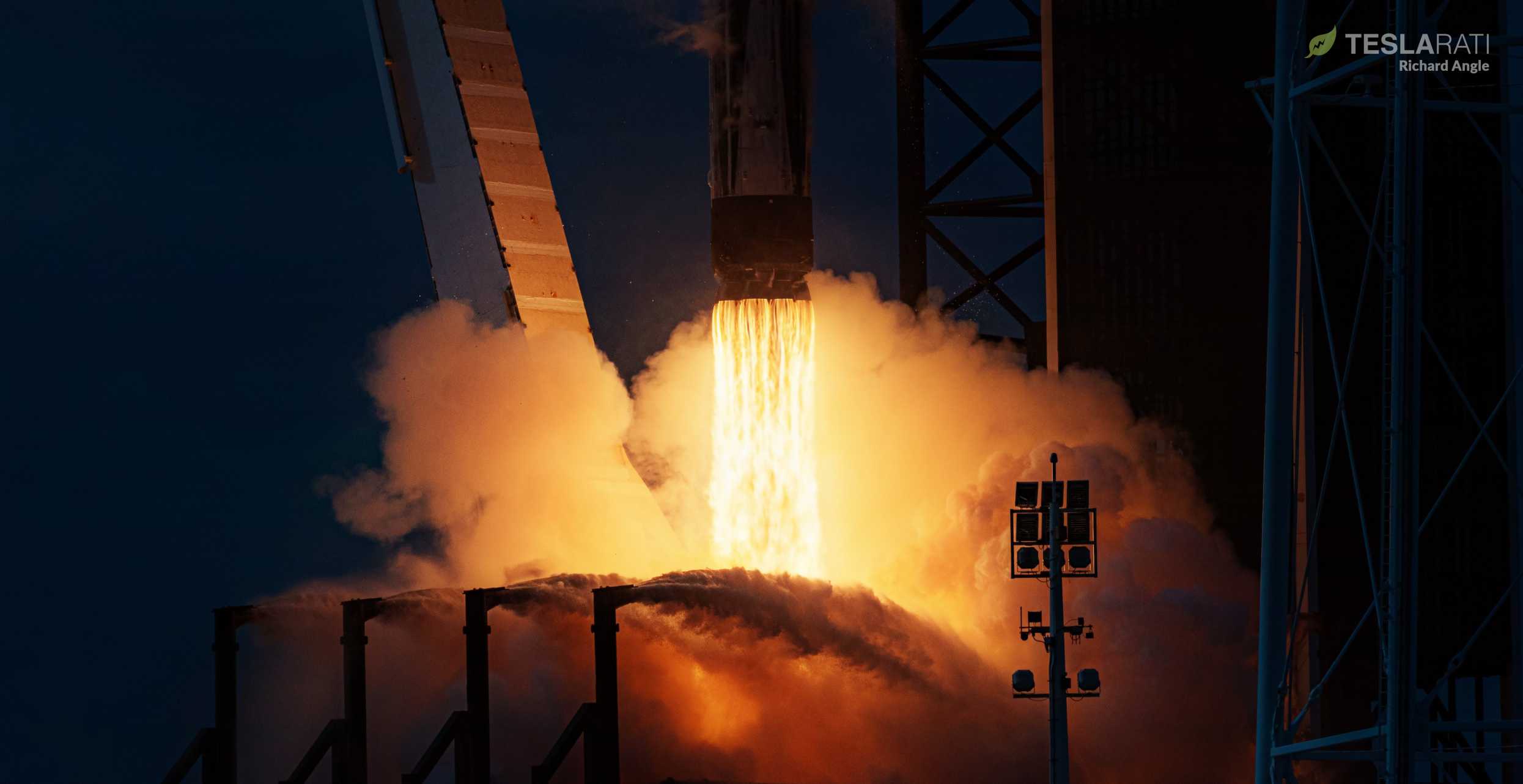

News
SpaceX’s first ever Block 5 booster gives one last hurrah, in photos
After helping SpaceX enter a new era of routine rocket reusability, the very first Falcon 9 Block 5 booster is officially nothing more than bits, pieces, and a few artificial reefs at the bottom of the Atlantic Ocean — intentionally destroyed to give SpaceX the confidence it needs to soon launch astronauts.
Captured on camera by Teslarati photographer Richard Angle, the upgraded Falcon 9 booster was able to give one last spectacular hurrah prior to its even more spectacular demise, returning fire to Kennedy Space Center (KSC) Launch Complex 39A for the first time in more than half a year. Lacking landing legs and grid fins, visible instead as comically stark outlines on the booster’s sooty exterior, Falcon 9 B1046 lifted off for the fourth and final time on January 19th, 2020.
In doing so, B1046 became the third orbital-class booster ever to fly launch four separate missions — a more than fitting end to the first in a line of upgraded Falcon 9 rockets that have brought with them major improvements in reusability and reliability. Nevertheless, a little over 90 seconds after lifting off for the fourth time, Falcon 9 B1046 – left behind after Crew Dragon successfully escaped the (simulated) failing rocket – yielded under intense off-nominal stresses, rupturing the booster’s propellant tanks and creating a vast fireball at least 300 meters (1000+ ft) in diameter.
Powered by nine Merlin 1D engines and capable of producing up to 7600 kN (1.7 million lbf) of thrust, Falcon 9 B1046 was extensively tested at SpaceX’s McGregor, Texas development facilities over a period of two or so months – unusually lengthy. The extra time was used to make sure that the first completed Block 5 booster – representing an almost clean-slate upgrade of the Falcon rocket family – was agreeing with SpaceX’s engineering models and expectations at all points.
The company likely spent several weeks or more performing numerous wet dress rehearsals (WDRs) — filling Falcon 9 B1046’s propellant tanks with liquid oxygen, refined kerosene (RP-1), helium, and nitrogen and verifying that the rocket was structurally sound and functioning smoothly. Once complete, SpaceX moved onto static fire testing, igniting the booster’s M1D engines for increasing periods of time. Finally, the company wrapped up the rocket and shipped it by road from Texas to Florida.
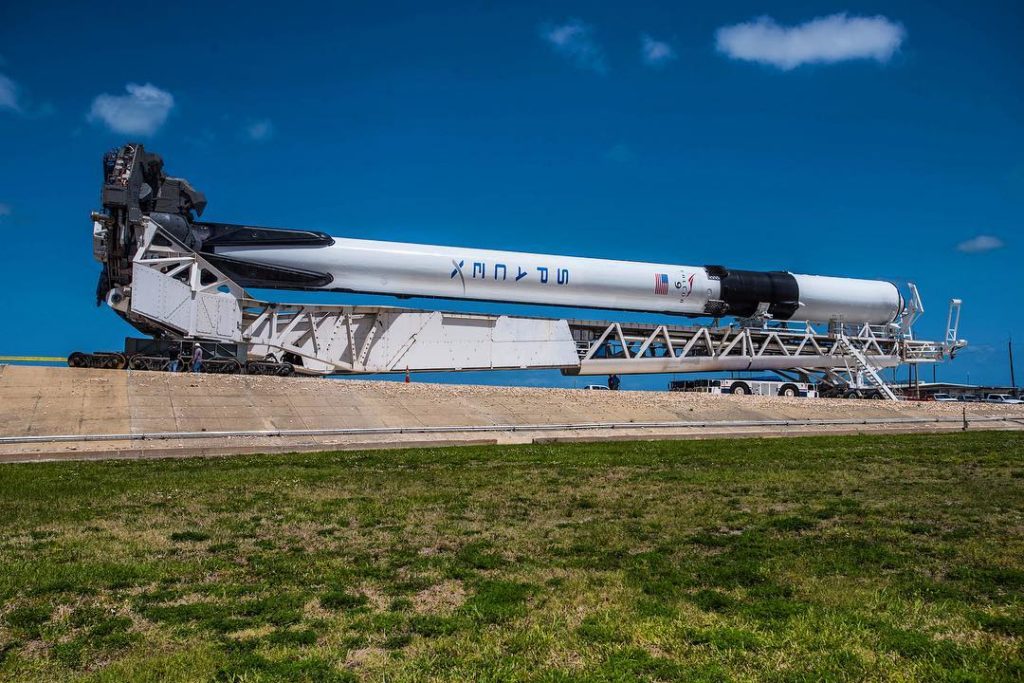
Shortly thereafter, the rocket was quickly prepared for flight and became the first Falcon 9 Block 5 booster to successfully launch and land in May 2018. Over the course of 2018, SpaceX debuted another five Block 5 boosters, while Falcon 9 B1046 became the first Block 5 booster to launch both twice and three times in August and December.
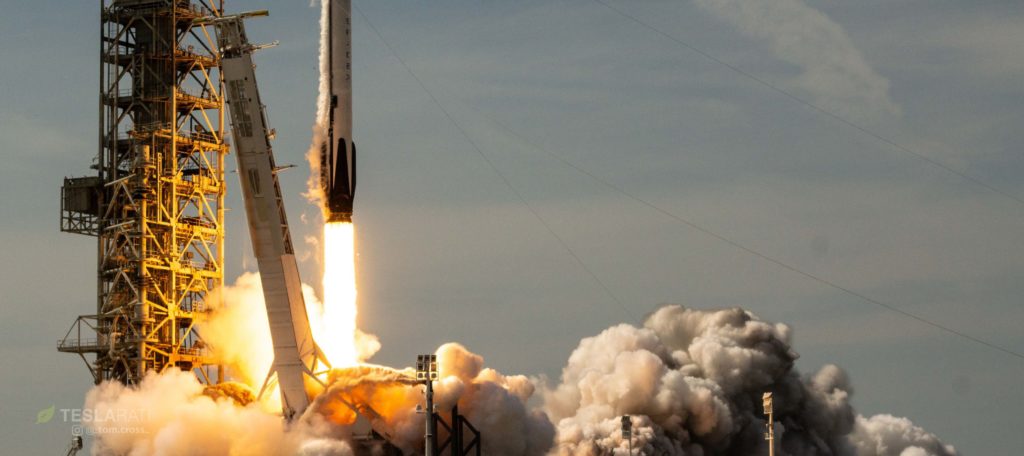
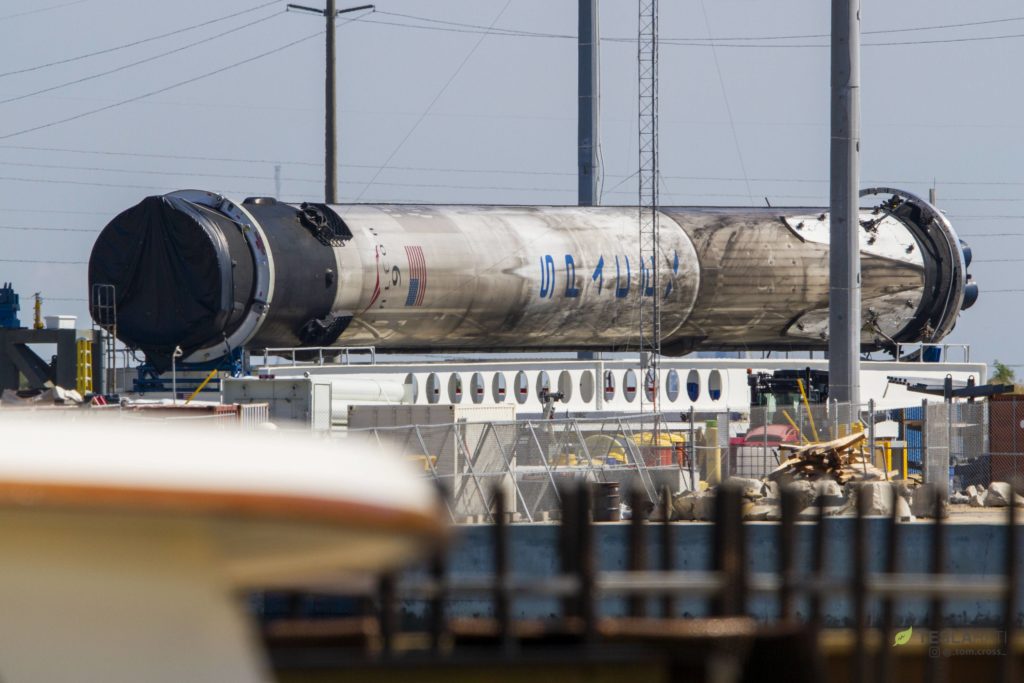
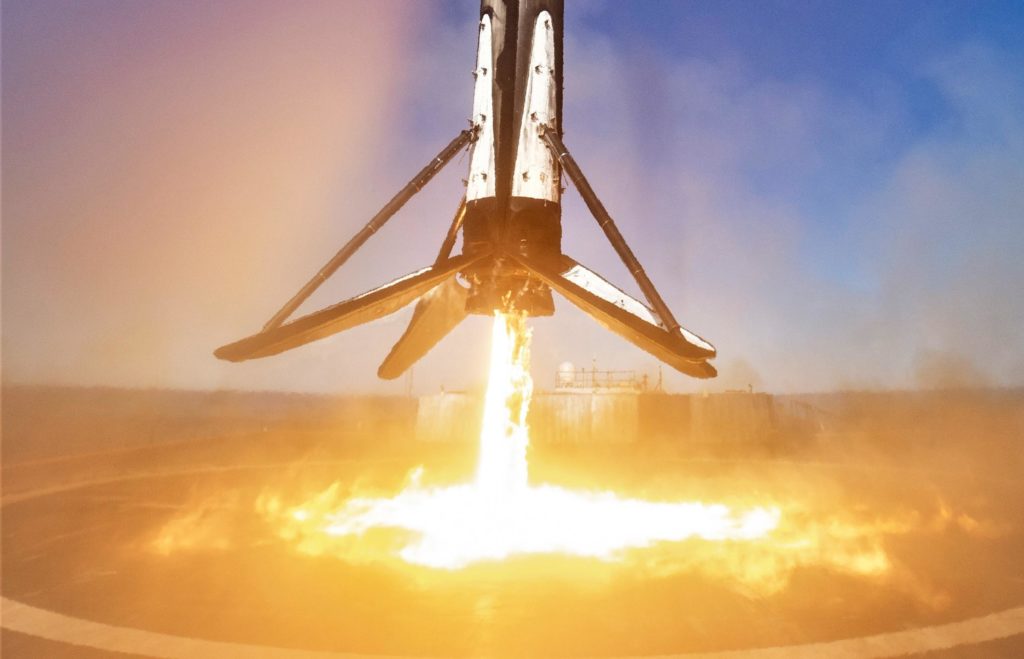
Finally, on January 19th, 2020, Falcon 9 B1046 lifted off for the fourth and last time, becoming the third SpaceX booster to do so in barely two months. Fittingly, B1046’s last launch occurred at Pad 39A, the same launch site it lifted off from for the first time back in May 2018. Carrying an expendable upper stage, Dragon trunk, and Crew Dragon capsule C205, B1046 could not have experienced a more perfect 90 or so seconds of uninterrupted flight. Interrupted, however, it would shortly thereafter become.
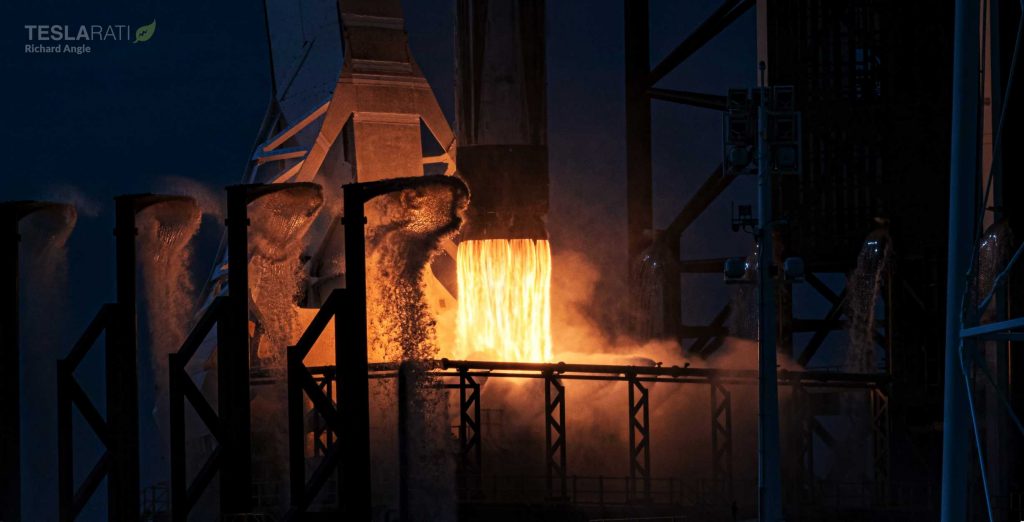
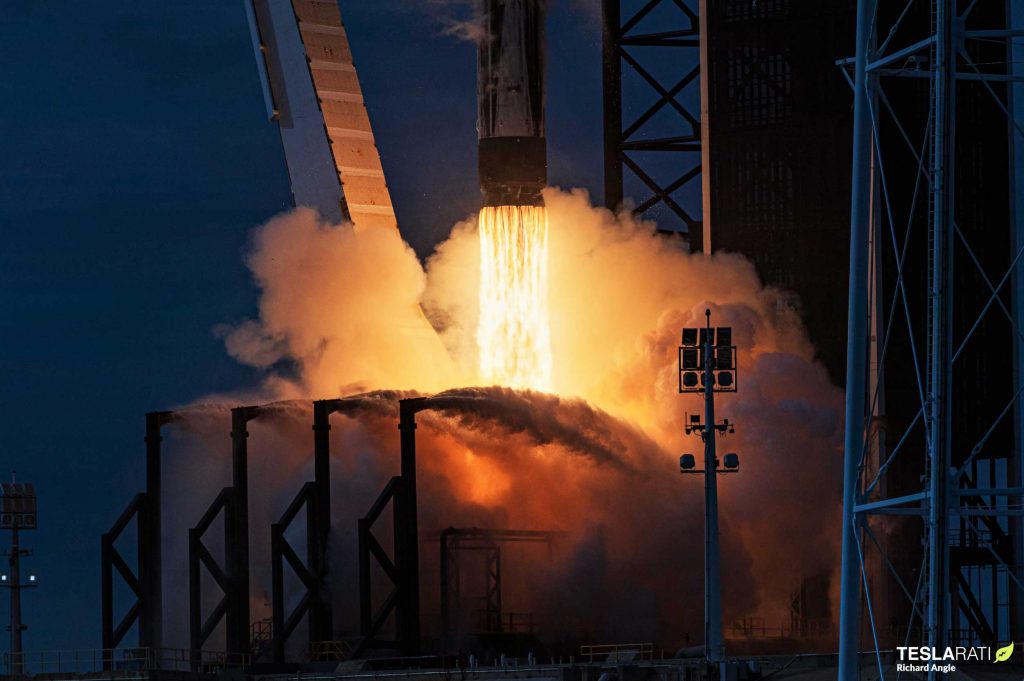
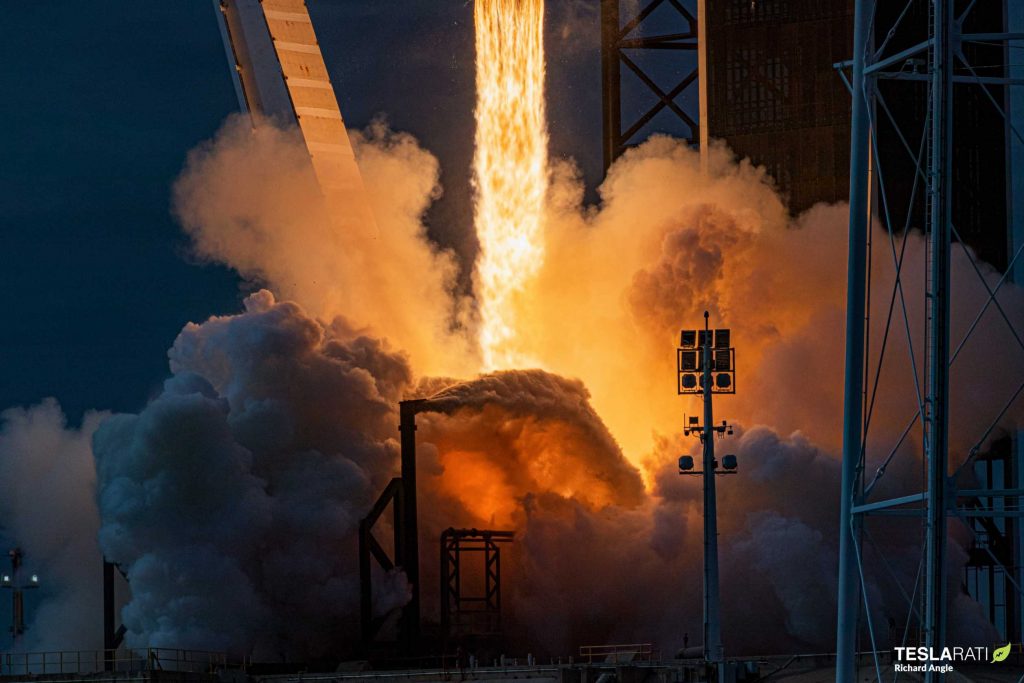
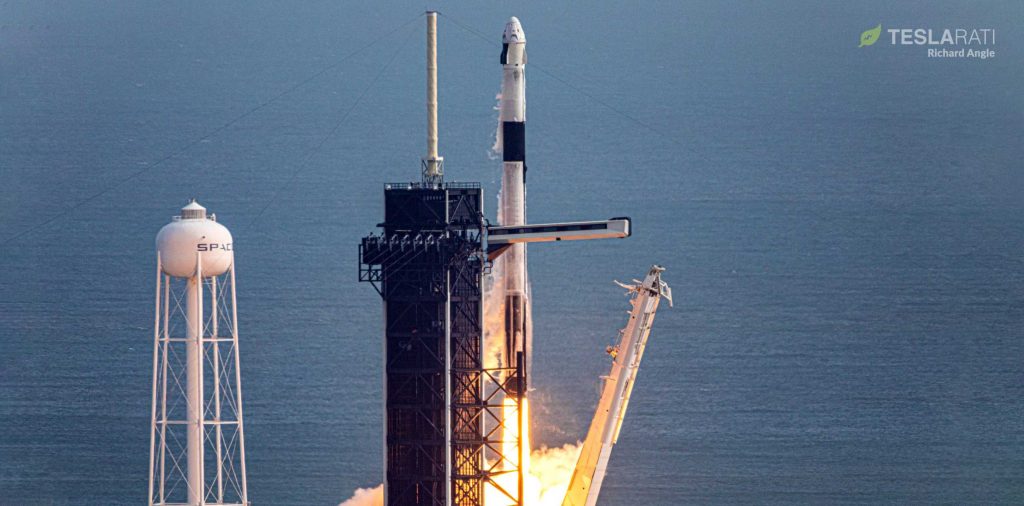
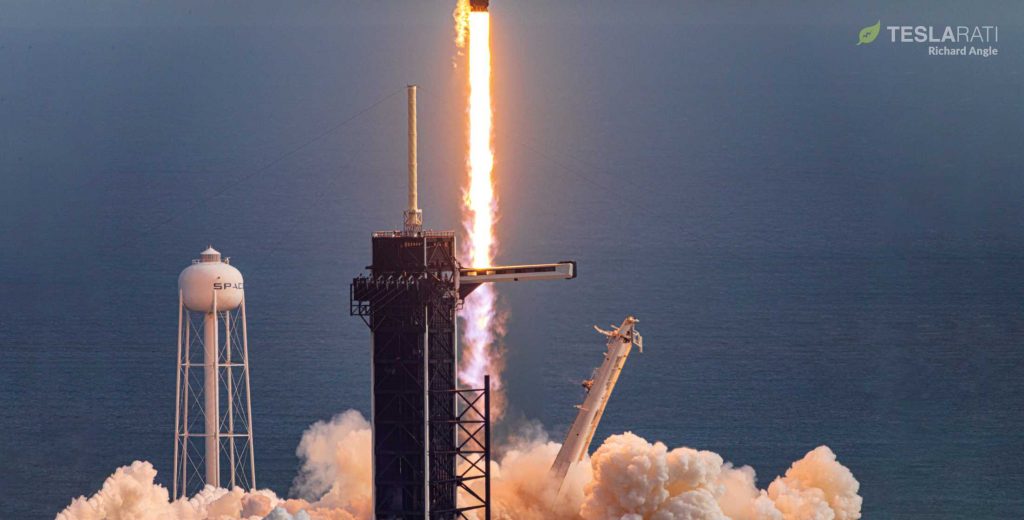
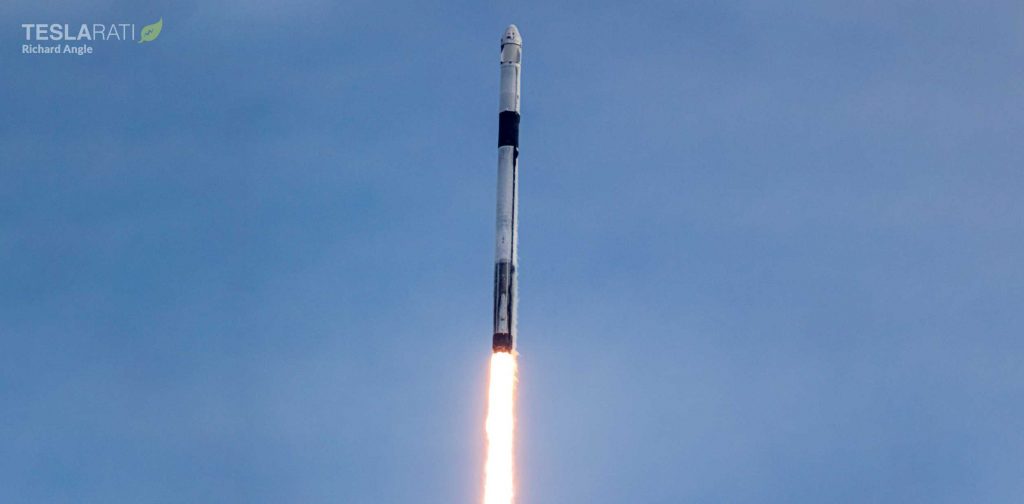
Around 85 seconds after liftoff, Falcon 9 B1046 shut off its Merlin 1D engines at the same time as Crew Dragon C205 ignited eight SuperDraco engines, briskly carrying the spacecraft several thousand feet away in just a handful of seconds. Now fully uncontrolled and rudely interrupted to a supersonic wall of air, B1046 found itself bent and contorted in ways – and under loads – it simply was not designed to survive. Seconds later, the booster’s pressurized propellant tanks were breached, releasing a rapidly dispersing cloud of fuel and oxidizer that almost instantly ignited, creating a fireball the size of several city blocks.
All things considered, not a bad way to go for a well-worn rocket.
Check out Teslarati’s Marketplace! We offer Tesla accessories, including for the Tesla Cybertruck and Tesla Model 3.
News
Tesla launches in India with Model Y, showing pricing will be biggest challenge
Tesla finally got its Model Y launched in India, but it will surely come at a price for consumers.

Tesla has officially launched in India following years of delays, as it brought its Model Y to the market for the first time on Tuesday.
However, the launch showed that pricing is going to be its biggest challenge. The all-electric Model Y is priced significantly higher than in other major markets in which Tesla operates.
On Tuesday, Tesla’s Model Y went up for sale for 59,89,000 rupees for the Rear-Wheel Drive configuration, while the Long Range Rear-Wheel Drive was priced at 67,89,000.
This equates to $69,686 for the RWD and $78,994 for the Long Range RWD, a substantial markup compared to what these cars sell for in the United States.
🚨 Here’s the difference in price for the Tesla Model Y in the U.S. compared to India.
🚨 59,89,000 is $69,686
🚨 67,89,000 is $78,994 pic.twitter.com/7EUzyWLcED— TESLARATI (@Teslarati) July 15, 2025
Deliveries are currently scheduled for the third quarter, and it will be interesting to see how many units they can sell in the market at this price point.
The price includes tariffs and additional fees that are applied by the Indian government, which has aimed to work with foreign automakers to come to terms on lower duties that increase vehicle cost.
Tesla Model Y seen testing under wraps in India ahead of launch
There is a chance that these duties will be removed, which would create a more stable and affordable pricing model for Tesla in the future. President Trump and Indian Prime Minister Narendra Modi continue to iron out those details.
Maharashtra Chief Minister Devendra Fadnavis said to reporters outside the company’s new outlet in the region (via Reuters):
“In the future, we wish to see R&D and manufacturing done in India, and I am sure at an appropriate stage, Tesla will think about it.”
It appears to be eerily similar to the same “game of chicken” Tesla played with Indian government officials for the past few years. Tesla has always wanted to enter India, but was unable to do so due to these import duties.
India wanted Tesla to commit to building a Gigafactory in the country, but Tesla wanted to test demand first.
It seems this could be that demand test, and the duties are going to have a significant impact on what demand will actually be.
Elon Musk
Tesla ups Robotaxi fare price to another comical figure with service area expansion
Tesla upped its fare price for a Robotaxi ride from $4.20 to, you guessed it, $6.90.

Tesla has upped its fare price for the Robotaxi platform in Austin for the first time since its launch on June 22. The increase came on the same day that Tesla expanded its Service Area for the Robotaxi ride-hailing service, offering rides to a broader portion of the city.
The price is up from $4.20, a figure that many Tesla fans will find amusing, considering CEO Elon Musk has used that number, as well as ’69,’ as a light-hearted attempt at comedy over the past several years.
Musk confirmed yesterday that Tesla would up the price per ride from that $4.20 point to $6.90. Are we really surprised that is what the company decided on, as the expansion of the Service Area also took effect on Monday?
But the price is now a princely $6.90, as foretold in the prophecy 😂
— Elon Musk (@elonmusk) July 14, 2025
The Service Area expansion was also somewhat of a joke too, especially considering the shape of the new region where the driverless service can travel.
I wrote yesterday about how it might be funny, but in reality, it is more of a message to competitors that Tesla can expand in Austin wherever it wants at any time.
Tesla’s Robotaxi expansion wasn’t a joke, it was a warning to competitors
It was only a matter of time before the Robotaxi platform would subject riders to a higher, flat fee for a ride. This is primarily due to two reasons: the size of the access program is increasing, and, more importantly, the service area is expanding in size.
Tesla has already surpassed Waymo in Austin in terms of its service area, which is roughly five square miles larger. Waymo launched driverless rides to the public back in March, while Tesla’s just became available to a small group in June. Tesla has already expanded it, allowing new members to hail a ride from a driverless Model Y nearly every day.
The Robotaxi app is also becoming more robust as Tesla is adding new features with updates. It has already been updated on two occasions, with the most recent improvements being rolled out yesterday.
Tesla updates Robotaxi app with several big changes, including wider service area
News
Tesla Model Y and Model 3 dominate U.S. EV sales despite headwinds
Tesla’s two mainstream vehicles accounted for more than 40% of all EVs sold in the United States in Q2 2025.

Tesla’s Model Y and Model 3 remained the top-selling electric vehicles in the U.S. during Q2 2025, even as the broader EV market dipped 6.3% year-over-year.
The Model Y logged 86,120 units sold, followed by the Model 3 at 48,803. This means that Tesla’s two mainstream vehicles accounted for 43% of all EVs sold in the United States during the second quarter, as per data from Cox Automotive.
Tesla leads amid tax credit uncertainty and a tough first half
Tesla’s performance in Q2 is notable given a series of hurdles earlier in the year. The company temporarily paused Model Y deliveries in Q1 as it transitioned to the production of the new Model Y, and its retail presence was hit by protests and vandalism tied to political backlash against CEO Elon Musk. The fallout carried into Q2, yet Tesla’s two mass-market vehicles still outsold the next eight EVs combined.
Q2 marked just the third-ever YoY decline in quarterly EV sales, totaling 310,839 units. Electric vehicle sales, however, were still up 4.9% from Q1 and reached a record 607,089 units in the first half of 2025. Analysts also expect a surge in Q3 as buyers rush to qualify for federal EV tax credits before they expire on October 1, Cox Automotive noted in a post.
Legacy rivals gain ground, but Tesla holds its commanding lead
General Motors more than doubled its EV volume in the first half of 2025, selling over 78,000 units and boosting its EV market share to 12.9%. Chevrolet became the second-best-selling EV brand, pushing GM past Ford and Hyundai. Tesla, however, still retained a commanding 44.7% electric vehicle market share despite a 12% drop in in Q2 revenue, following a decline of almost 9% in Q1.
Incentives reached record highs in Q2, averaging 14.8% of transaction prices, roughly $8,500 per vehicle. As government support winds down, the used EV market is also gaining momentum, with over 100,000 used EVs sold in Q2.
Q2 2025 Kelley Blue Book EV Sales Report by Simon Alvarez on Scribd
-

 Elon Musk2 weeks ago
Elon Musk2 weeks agoTesla investors will be shocked by Jim Cramer’s latest assessment
-

 News3 days ago
News3 days agoTesla debuts hands-free Grok AI with update 2025.26: What you need to know
-

 Elon Musk1 week ago
Elon Musk1 week agoElon Musk confirms Grok 4 launch on July 9 with livestream event
-

 Elon Musk5 days ago
Elon Musk5 days agoxAI launches Grok 4 with new $300/month SuperGrok Heavy subscription
-

 News2 weeks ago
News2 weeks agoTesla Model 3 ranks as the safest new car in Europe for 2025, per Euro NCAP tests
-

 Elon Musk2 weeks ago
Elon Musk2 weeks agoxAI’s Memphis data center receives air permit despite community criticism
-

 News5 days ago
News5 days agoTesla begins Robotaxi certification push in Arizona: report
-

 Elon Musk2 weeks ago
Elon Musk2 weeks agoTesla scrambles after Musk sidekick exit, CEO takes over sales















